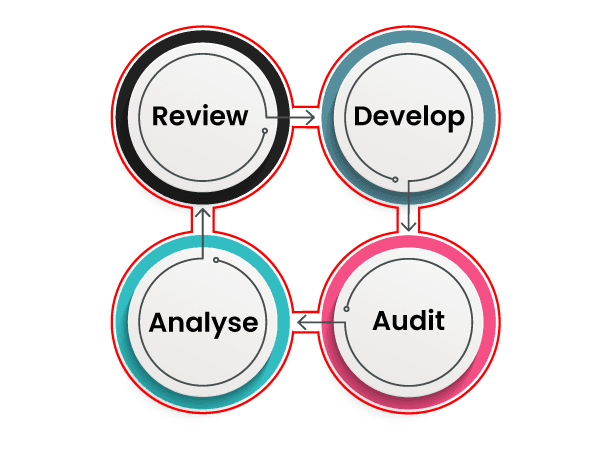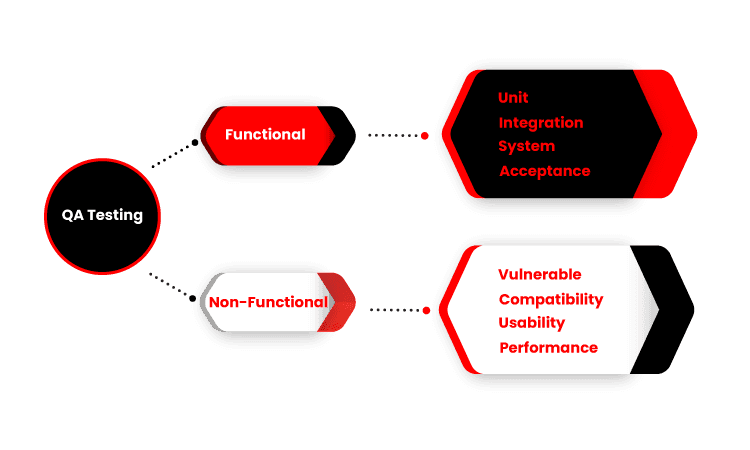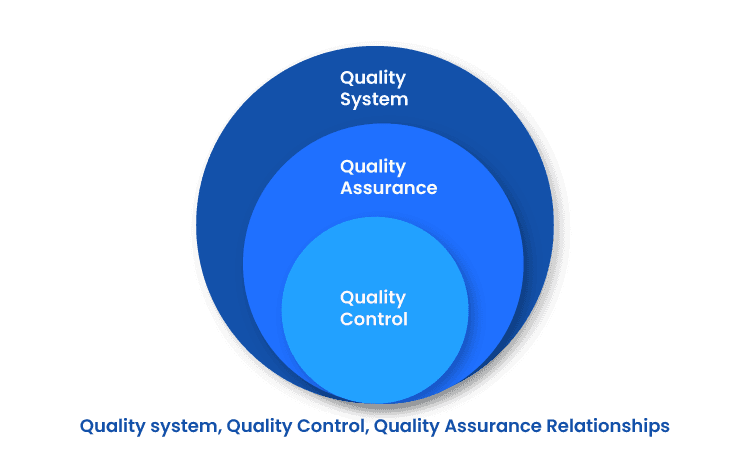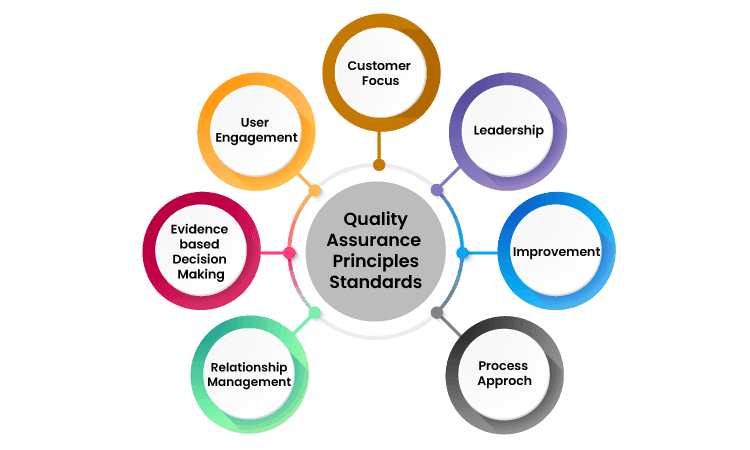- Home
- Blog
- Quality Assurance
- What is Quality Assurance?

- Quality Assurance vs Quality Control
- QA Interview Questions
- SDET Interview Questions
- QA Automation Interview Questions
- What Is Unit Testing?
- Types of Unit Testing
- What is Functional Testing?
- Quality Control (QC) Interview Questions
- Unit Testing Interview Questions
- Quality Control Job Description
- Quality Analyst Job Description
In today's competitive market, the quality of a product or service plays a vital role in the software development process. The standards and procedures defined by quality assurance can help the companies prevent product defects before they arise. In this blog post, we'll see what is Quality assurance, why it's more important, testing methodologies for ensuring quality in software, and the benefits that quality assurance can offer for a business.
Overview of Quality Assurance
In this Quality assurance blog, you will learn the below topics:
- Introduction to Quality Assurance
- What does QA mean in software testing?
- Importance of Quality Assurance
- QA process: What does it involve?
- QA methods
- What is Quality control?
- QA vs QC vs testing
- QA Standards
- Advantages and Disadvantages of quality assurance
Introduction to Quality Assurance (QA)
Managing the quality of a product or service involves planning, fulfilling, and monitoring activities. Quality assurance comes under the monitoring facet of that discipline. It's the process or act of confirming whether the firm's quality requirements met or not.
An alternate definition is it's a part of quality management, which focuses on fulfilling the quality requirements. Quality assurance is a twofold process that supports management internally and customers' confidence and company credibility externally.
QA strives to deliver consistent results through a set of standardized processes and procedures that systematically monitors different aspects of a product or a service. By regular audits and other forms of assessments, QA detects and fixes the problems or variances that fall outside of organized standards or requirements.
The concept of quality assurance was first started in the manufacturing domain and later spread to most of the industries, including software development.
| If you want to enrich your career and become a professional in QA, then enrol our "QA Certification Training" This course will help you to achieve excellence in this domain. |
What is QA in software testing?
Quality Assurance (QA) in software testing is defined as a procedure to ensure the quality of a product or service meeting the specifications set by the organization. QA enhances the software development process and makes it efficient and effective as per quality standards defined for software products. Quality Assurance is also called Quality Assurance Testing.
Importance of Quality Assurance
The quality of the product is the only thing that matters in today's software world. It helps companies to create products and services that fulfill the customer's expectations. Also, it yields high-quality product offerings that build trust and loyalty with customers. Implementing a few standard software quality assurance practices will take Quality Assurance a long way:
-
Make quality assurance an inherent part of the technical team.
-
Create a robust testing environment
-
Predefined quality standards
-
Select the release criteria carefully.
-
Measure quality metrics
-
Create a performance testing and dedicated security team.
-
Allocate appropriate time for each process
-
Prioritize the bug fixes based on software usage
-
Leverage automation tools whenever needed.
-
Maintain continuous communication, collaboration, and optimization across all departments.
QA process: What does it involve?
The quality assurance process involves four key phases:
-
Developing a quality assurance plan
-
Audit project quality
-
Analyze
-
Review project

Let's look into the above stages in-detail:
1. Developing a quality assurance plan
The first phase of the QA process involves planning the overall strategy for assuring quality. The fundamental steps in creating a QA plan are sequential and start with setting up goals of product assurance as to why the product would need quality assurance.
The next step involves assigning responsibilities to the members of the quality team and collecting relevant product standard information to define compliance criteria.
Identify a set of metrics and measurements to use to gauge the quality levels.
2 .Audit
A quality audit is a formal review of product ongoing status to see whether these activities executed in line with business processes and tactical decisions. The goal of conducting a product audit is to show missing policies, procedures, or techniques that reduce quality levels and increase project failure probability. Under a quality audit, you can review metrics like defect frequency, failure rate, budget variation, and gauge project activities under the quality baseline.
Finally, quality assurance audit activity generates formal documentation of required changes to the execution process and acts as a base for formulating corrective actions.
3. Analyse project quality
Quality analysis is a combination of steps to inspect and review a specific project activity and identifies what would improve the activity's value. The goal of project quality analysis is to check quality levels and implement actions that are necessary to achieve improvements in the current quality management framework.
The QA activity allows examining problems confronted, constraint deviations, and any tasks/processes that add value. It involves root cause analysis, fit analysis, techniques for identifying and resolving issues, and formulating corrective actions.
4. Review Project Activities
After executing the quality audit and analysis, the next step would be to introduce the recommended changes in project processes through a project review process. And, this will complete the quality assurance process cycle.
Companies must follow effective quality assurance processes to reduce errors in the final product.
Quality Assurance (QA) Methods
There are several types of quality assurance testing, all of which are important for ensuring your product is bug-free. Below, we've listed the primary QA testing methodologies to give you a complete understanding of the testing process and how it improves your software, app, or product.
There are two types of testing in QA, one is functional, and the other is non-functional testing. The goal of utilizing this testing methodology is to manage software successfully in multiple environments and across different platforms.

Functional Testing
In this testing, we test the application against specific business requirements. It involves several test types that configured in a way that software behaves as expected to utilise the test cases provided by the design team. The testing methods are conducted in order and include:
-
Unit testing
-
Integration testing
-
System testing
-
Acceptance testing
1. Unit Testing
The first level of testing is unit testing, which developers by themselves perform. It ensures individual components of a piece of software at the code level are functional and work as they are intended to be. Developers in a test-driven environment will typically write and run the tests before the software or feature passed over to the test team.
2. Integration Testing
This part of the testing process involves integrating different units and thoroughly testing them. Unlike unit testing, which focuses on an individual unit, integration testing is all about checking how units work together to complete functions. Like unit testing, integration testing can be a slow, repetitive process. QA teams often automate the parts of the integration testing to improve efficiency and save time.
3. System testing
System testing evaluates integrated systems to ensure whether it meets the specific requirements. This test discovers previously unnoticed bugs, stability issues, and significant problems.
4. Acceptance testing
This testing process is the last phase of functional testing and ensures the project or product necessities satisfied.
Non-functional Testing
Non-functional tests include tests that focus on operational aspects of the software. This include:
- Vulnerable/security testing
- Compatibility testing
- Usability testing
- Performance testing
1. Vulnerable/security testing
Tests an application or website to find the vulnerabilities or security holes utilized by the hackers. This testing phase aims to ensure there are security risks that could compromise the user's data or other sensitive information.
2. Compatibility testing
This testing verifies the application's compatibility with the hardware and software it will be running on, from internet browsers to hardware, operating systems, complementary plugins, and several other factors tested during this phase. It tells how the application will work in multiple environments.
3. Usability testing
Usability testing tests application ease of use from an end-user perspective. It's performed during the system testing stages.
4. Performance testing
Tests the application performance under various conditions, including stability and responsiveness. The objective of this testing is to ensure the app performs as it should be.
Now that you understand what are the QA methodologies. Let's know what quality control is and how it differs from quality assurance.
| Related blog: Top QA Interview Questions |
What is Quality control?
Quality Assurance (QA) and Quality Control (QC) are the two aspects of quality management. They both look similar, but there are some distinct differences between the two concepts.

Quality control is a part of quality management focused on fulfilling quality requirements. It doesn't deal with the processes used to create a product, instead examines the quality of the end product and outcome.
The primary purpose of quality control is to determine any needs for corrective actions. Better quality control helps the companies meet customer demands for better products.
| For More Info: Difference between Quality Assurance and Quality Control |
For More Info: Difference between Quality Assurance and Quality ControlQuality Assurance vs Quality Control vs Testing: Comparison
The term 'Quality' is achieved by implementing and following three standards and established procedures, namely; Quality Assurance, Quality Control, Testing. But most of them get confused to pin down the differences between quality assurance, quality control, and testing. Although they are interrelated, some specific points set them apart. The following table lists the differences between QA vs QC vs testing.
| Quality Assurance (QA) | Quality Control (QC) | Testing |
| Quality assurance checks the processes and adds changes to the processes which led to the end-product. | Quality control reviews a product or service and checks for the result. | Testing includes activities that ensure the identification of defects/errors/bugs in software. |
| Focuses on processes and procedures rather than carrying out the actual testing on the product. | Focuses on the actual quality of the product, by implementing various processes and procedures, including testing. | Testing is one of the techniques of quality control to identify defects and bugs for improving quality. |
| It’s a subset of the STLC (Software Test Life Cycle). | It’s a subset of QA (Quality Assurance). | It’s a subset of QC (Quality Control). |
| Process-oriented activities | Product-oriented activities | Product-oriented activities |
| Responsible for the entire Software Development Life Cycle. | Responsible for the software testing life cycle. | Accountable for the bug/defect-free product. |
| It’s a failure prevention system. | QC is a corrective measure. | Testing is a failure detection system. |
What are Quality Assurance Standards?
Quality assurance (QA) standards are a set of measures implemented by businesses worldwide to confer commitment to delivering quality products or services to their customers. Mainly, QA standards are about meeting customer requirements that exceed their expectations.
Companies will document how to meet the requirements and specifications of a client or customer in a systematic, reliable fashion to meet the QA standards.
Standards provide you with a shared vision, understanding, and vocabulary needed to meet the expectations of the stakeholders.

Principles of Quality Assurance Standards
ISO 9001 is the well-known quality assurance or QA system standard internationally. The guidance in ISO 9001:2015 includes a more robust customer focus, best management practices, and how can they change a company, and keeping a pace of continuing improvements. Along with general improvements to ISO 9001, includes improvements to its structure and more information for risk-based decision-making.
Advantages and Disadvantages of quality assurance
The quality of a product is a crucial competitive differentiator. Quality assurance helps you ensure that you create products that are defect-free and meet the expectations of customers.
Advantages of Quality Assurance
- QA saves money - It leads to cost reductions stemming from the prevention of product defects.
- Prevents from unforeseen emergencies - With corporate software, the stakes are even higher, and the bugs can lead to system blackouts, missing data, and communication breakdowns. With QA, there is no margin for errors.
- Promotes the Organization's productivity and efficiency - While development and testing performed in parallel can fix defects in the early stages.
- Boosts customer satisfaction - Regular client involvement in software development and testing increases the customer satisfaction that software quality developed as per the requirements.
- Improves Client Confidence - Proper quality checks at various levels of software like a review, inspection, and more with the involvement of both internal and external stakeholders will increase the client's confidence in the submission of weekly reports of the defect. Requirement metrics also help in assuring the client’s work gets done on time.
Disadvantages of Quality Assurance
- Time-consuming - Executing each action in QA will be time-consuming and leads to wastage of time in documentation and meetings rather than working on actual software development and testing sometimes.
- High cost - Through QA, though the cost of fixing bugs in later stages of the software will be reduced, for the small projects with the low budget, it's difficult to quality assurance as the number of resources increases in the project so does the cost of a project. For small projects, hiring the whole team of QA and implementing SQA causes a drastic increase in the price of a project.
- Challenging to implement sometimes - As quality assurance defines all the activities and actions that should be taken at each step of software development in a very detailed manner, sometimes it becomes difficult to implement every single process in development.
Conclusion:
Businesses adopting quality assurance can enjoy many advantages and become more competitive in the market. ISO certification is the most superior QA standard and recommended to adopt for any business in any industry.
In the future, the market size for quality assurance is expected to grow even more across the companies, and this creates a massive demand for QA professionals.
 On-Job Support Service
On-Job Support Service
Online Work Support for your on-job roles.

Our work-support plans provide precise options as per your project tasks. Whether you are a newbie or an experienced professional seeking assistance in completing project tasks, we are here with the following plans to meet your custom needs:
- Pay Per Hour
- Pay Per Week
- Monthly
| Name | Dates | |
|---|---|---|
| QA Training | Jan 10 to Jan 25 | View Details |
| QA Training | Jan 13 to Jan 28 | View Details |
| QA Training | Jan 17 to Feb 01 | View Details |
| QA Training | Jan 20 to Feb 04 | View Details |

Madhuri is a Senior Content Creator at MindMajix. She has written about a range of different topics on various technologies, which include, Splunk, Tensorflow, Selenium, and CEH. She spends most of her time researching on technology, and startups. Connect with her via LinkedIn and Twitter .















